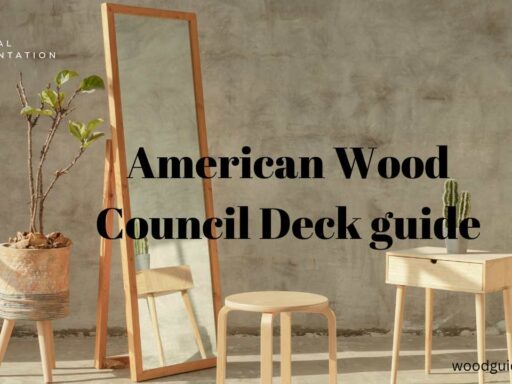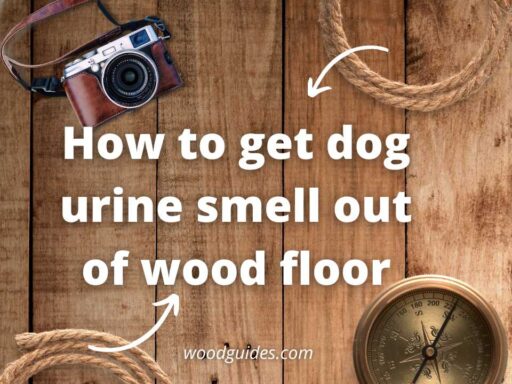Is Mold on Wood Furniture Dangerous: Powerful 13×5.00-6 Tires!
Uncover the hazards of mold infestation on Is Mold on Wood Furniture Dangerous. Gain insights on effective prevention methods and safe mold removal techniques for a healthier home.
Mold on Is Mold on Wood Furniture Dangerous for Beginners
You love your fine Is Mold on Wood Furniture Dangerous as a homeowner. It brings an inviting and elegant touch to your house. However, there is a hidden trap that might compromise your furniture’s integrity and expose you, plus other family members, to health problems and mold. Mold on any wood furniture does not look good and can cause enormous damage if left unattended. In this essay, I will discuss the dangers of mold growing on wooden furniture; the dangers of exposure to mold in damp environments have triggered an asthma epidemic in the United States,
which affects 24 million people, including six million children who, according to Dr. Kenneth Mendez are likely to get an attack after visiting their relatives in US-News Report via Reuters Health News August 1st, 2014; signs that indicate mold development on wood surfaces of wooden artifacts and methods of preventing it among others.
Understanding Mold Hazards on Wood Furniture
Mildew is a form of fungus found in areas with high humidity levels. When it comes into contact with wooden fixtures, it can begin spreading at a rapid pace. You may find the presence of mildew deteriorating the appearance of your piece as well as weakening its internal structure, like framework, etc. Therefore, Mold may infest through infiltrating inside fibers comprising timber, leading to its distortion deformations or, finally, destruction by crumbling. This can be so costly and eventually cause irreparable damage to the furniture.
Heath Risks From Molds Exposure
Particularly for individuals who have allergies or respiratory illnesses, being exposed to mold can lead to severe health effects. Mold spores released into the air can be inhaled, hence causing diverse diseases when they enter human nostrils. For example, allergic reactions such as hay fever-like symptoms; respiratory infections, e.g., pneumonia or bronchitis; asthma attacks (especially in asthmatic people), among others. Early action against mold growths should be taken on wooden items within your possession, as this shall mitigate such health conditions.
Signs and Symptoms of Mold on Wood Furniture
Early detection is the best defense against mold growth that will save your health and property. Below are some signs to watch for:
Visible Signs
Discoloration: Look for green, black, brown, white, or orange patches on the wood surface. The mold may appear in different colors; therefore, don’t exclude it because of its color.
Furry Growths: Molds commonly appear as furry, cotton-like, or powdery substances, especially in areas with high humidity levels.
Surface Deformations: At times, mold growth can cause warping, buckling, or cracking of wood that they feed on.
Water Marks: If you notice any water stains on wooden fixtures, then there must be a problem inside that furniture that supports mold growth.
Odor Perception
Mildew Smell: A constant dirty smell from your furniture could suggest the presence of mold, especially if the odor intensifies in damp weather conditions.
Others include
Spotted Spores: In some instances you may see dark colored spots but often require magnification to actually determine spore growth. The best thing to do when suspecting spores would be to consult before it is too late with experts who have knowledge about such matters .
Health Complaints: In case anybody in your family has unexplained respiratory issues involving allergy reactions and irritation after being near, it simply means that it might be due to microorganisms causing the rotting down of these objects.
Remember this! Just because you do not see visible molds doesn’t mean they are not present. Sometimes molds hide deep inside furniture hence clean inspection is important while considering the risk factors regularly.
These should help when trying to diagnose whether one’s wooden item has been attacked by molds or not;
Isolate Your Furniture – It will prevent more spores production by isolating such furnishings into open aired locations as writers from Madero again disputed.
Open the Windows; Air Must Flow – The best way to keep your room dry and airy is by opening windows which may allow air circulation thus lowering the humidity level.
Cleaning with vinegar and water is a possible method for small molds (but never combine ammonia and bleach, as it creates poisonous fumes). Try the solution on a hidden area of the wood finish.
Extensive Mold Growth: The mold covers a broad surface area and appears to be deeply embedded. If you have concerns about your health, call in professional mold remediation services that are reliable and safe.
Being vigilant at first sight of mold presence helps you maintain healthy living standards and saves your valued wooden furniture.
How Does Mold Grow on Wood Furniture?
Mold needs moisture, warmth, and organic ingredients to grow. Mold can easily survive on moisturized wooden surfaces such as furniture. This could be caused by high humidity levels or water leakage– creating excess moisture. When environmental conditions are right, however, mold particles that are found in the air land on them and then begin growing. To prevent mildew growths on wood, one must make sure the wood is always checked and maintained frequently.
Prevention and Maintenance Tips to Avoid Mold Growth
Avoiding mold growth on wood requires good care and maintenance from time to time. The following tips may help:
- Use dehumidifiers or air conditioners to control moisture levels within the house.
- Make sure there is sufficient ventilation in rooms where wooden furniture is located especially those prone to dampness like kitchenettes & bathrooms.
- Place some space between furnishings’ backsides & walls so that enough air moves around, inhibiting fungus development.
- Regularly clean & dust it off to get rid of any dampness or dirt building up into it.
- Avoid using too much water while cleaning your furniture. Instead, use a mild detergent mixed with warm water for wiping down purposes only.
With these precautionary measures in place, the chances of molds being created are reduced greatly, thus ensuring aesthetic appeal as well as durability.
Steps to Remove Mold from Wood Furniture
To minimize further damage, if you find signs of fungi infection on its surface, take immediate steps to eradicate it. Here are the guidelines for removing mold:
- Put on protective gear like gloves, goggles, or masks to avoid getting in direct contact with spores.
- Move the furniture into a well-aerated room, preferably outside, as this will prevent the movement of mold spores.
- Gently brush/flock the visible molds off its outer surface using soft brushes or clothes.
- Prepare a solution of hydrogen peroxide or water plus vinegar and apply it over the damaged part.
- Wait for a few minutes before scrubbing softly on the infected area using either a cloth or brush soaked into cleaning solutions.
- Wash it properly with clean water and dry it completely so that no moisture is retained in it.
Remember to dispose of any materials, such as brushes or cloths, that come into contact with mold spores. Proper disposal ensures that the mold does not spread to other areas of your home.
Professional Mold Remediation Services for Wood Furniture
When you discover that your precious wooden furniture has been infested by mildew, it can be worrisome. Do not despair! There is hope through professional mold remediation services that bring back life to your cherished furniture pieces. Why you need assistance from experts are as follows:
Knowledge and Tools
Mold Identification: It is vital to identify the type of mold so that professionals can determine the best treatment plan.
Safe and Effective Mold Removal: They can remove the molds safely while minimizing the spread of spores that may affect your health by using their knowledge and equipment to remove them completely.
Containment Techniques: Mold remediation specialists employ containment procedures to prevent other areas of your home from becoming contaminated with spores released during cleaning processes.
Protecting Your Health
Mold Exposure Risks: This includes respiratory problems, allergies, among other health effects. During the mitigation process experts take caution not to expose you unnecessarily.
Proper Safety Gear: They wear special protective clothes in order to protect themselves from this danger and do not allow any more spores out into the open air.
Furniture Restoration
Minimizing Damage: Skilled personnel understand how to eliminate molds without massive destruction of the wood itself.
Restoration Techniques: These include sanding, refinishing, or even repairing some parts, restoring both its aesthetics and functionality
Peace of Mind
Guaranteed Results: Several professional services provide warranties on their work to assure you that they have done away with all traces of molds hence giving peace of mind.
Insurance Coverage: Under certain circumstances, part or whole costs incurred for professional mold remediation could be covered by your homeowner’s insurance policy
When to Call a Professional
Extensive Mold Growth: Where furniture has a large area affected by mold, or it appears deeply set inside, there is a need for professional intervention,
Health Concerns: If anyone in your household has allergies or respiratory issues, it’s best to leave mold remediation to the professionals
Uncertain about Mold Type: When one isn’t sure about which type of molds are affecting them then there is need for an expert approach towards identification and treatment thereof.
By calling in professional mold remediation services, you can ensure the safe removal of molds from your wooden furniture and, therefore, protect your own health and preserve your valuable items.
Importance of Regular Inspection and Maintenance
The Importance of Regular Inspection and Maintenance: Why Mold on Wood Furniture is a Threat
This means that mold growing on Is Mold on Wood Furniture Dangerous is more than just a cosmetic problem because it poses health risks for you as well as the risk of spoiling things. Below are the reasons why regular inspection and maintenance should be given priority:
Health Concerns
Mold Exposure: Mold releases spores that can be inhaled by people, thus causing respiratory issues, allergies, and irritation. This becomes even more worrying if one has asthma, small kids, or elderly individuals.
Hidden Growth: For mold growth inside furniture which could be invisible at times; hence inspection should be done proactively.
Protecting Your Furniture
Material Damage: When molds grow on wood, they consume its organic materials over time, making them weak and leading to permanent damage. You can avoid an elaborate repair or even replace the whole set by identifying it early enough.
Early Intervention is Key
Easier Removal: It’s less of a hassle removing slight cases of infestation compared to large well established ones.
Prevention of Spread: By conducting regular checks for molds early enough it helps in preventing the spread to other pieces or rooms in your house reducing the remediation process duration.
Tips for Regular Inspection and Maintenance
Visual Checks: If you see any fuzzy patches or discolored areas on furniture, detect a musty smell and then examine whether these might be signs of mold growth.
High-Moisture Areas: Pay particular attention to moist locations like bathrooms, basements, kitchens, etc., where wooden fixtures are located.
Cleaning and Drying: Always use a damp cloth to clean your wooden furniture, but make sure it dries completely, never allowing moisture to accumulate unnecessarily
Ventilation: Encourage good circulation in your house apart from avoiding condensation that may promote the growth of molds.
Your wood furniture will stay attractive and useful for a long time, if you incorporate regular inspections and maintenance practices into your routine, catch mold growth early enough, prevent severe health concerns and costly furniture repairs.
Remember: if it is possible that you are dealing with significant mold growth on your furniture, especially when it has covered a large area, or if you have health concerns, call in professional mold remediation services to come and remove the mold safely and effectively.
FAQs
Is there any danger in having molds grow on wood furniture?
Yes, molds on wood furniture can be dangerous. This is because it may compromise the stability of the furniture while its spores create health hazards for those who inhale them.
Can I do away with mold from wood furniture by myself?
Definitely, yes! You can remove mold from wood furniture yourself, but make sure you use all necessary safety precautions and the correct cleaning agents.
How do I stop my wooden items from growing molds?
Control the humidity levels, ensure there is proper ventilation and keep cleaning regularly to prevent growth of molds on your wooden materials.
Conclusion: Taking Action Against Mold on Is Mold on Wood Furniture Dangerous
Mold poses hidden dangers to people’s health and can lead to extensive damage. By recognizing symptoms of mold exposure, understanding its risks, and taking preventive action before an infestation begins, one can keep their possessions safe. Regularly inspecting, maintaining, and taking prompt actions are essential so that your wooden pieces maintain their beauty over time and no fungus grows.
If ever you spot an extensive fungus development or doubt if it should be removed by yourself, always consider seeking professional assistance in the form of effective mold remediation. Take action today against the hazardous effects of fungi like mildew so that your precious wooden items stay pure for generations.
CTA: Don’t let such fungus get worse on your wooden material. Just call us any time. Our expert team will visit your home and get rid of it professionally. Call our professional mold removal experts now if you suspect molds on your Is Mold on Wood Furniture Dangerous for an in-depth examination and safe elimination. Start taking action today to preserve both the condition of your furniture and your own health.




